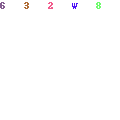The retail sector in India has seen massive transformation over the last decade with the rise of organized retailing. Large retail chains and stores have taken over majority of the retail space, bringing in more choice, variety and customer experience for shoppers. Let’s take a deeper look at how organized retail has evolved and some key aspects shaping its future.
Emergence of Retail Chains
In the early 2000s, the concept of Organized Retail was introduced in India with the establishment of the first large format retail chains like Reliance Fresh, Subhiksha and Spencer’s. These chains focused on offering consumers groceries and daily essentials under one roof in large stores. The convenience of one-stop shopping attracted many customers who were used to visiting local neighbourhood stores till then. Over time, more retail chains entered different segments like apparel, electronics and appliances.
Big retail names that have dominated the Indian market include Reliance Retail, D-Mart, Shoppers Stop, Lifestyle, Westside, Max Fashion and Easyday. These chains have hundreds of stores across India delivering standardized shopping experiences. Their supply chain efficiencies and economies of scale allowed them to offer products at competitive prices, further boosting their popularity among consumers.
Rise of Mall Culture
Around the late 2000s, shopping malls started cropping up in major cities across India, fuelled by rising disposable incomes and aspirations of an emerging middle class. World-class malls integrated retail, food and entertainment under one roof in air-conditioned and neatly designed spaces. These malls housed major international and domestic retail brands, giving Indians exposure to global shopping trends.
Metros like Delhi, Mumbai, Bengaluru, Hyderabad saw rapid mall development as Indian and global mall developers invested billions of dollars. Popular malls include DLF Promenade, Phoenix Market City, High Street Phoenix, Forum Mall and Inorbit malls attracting massive footfalls. Malls spearheaded organized retail’s shift towards a more experiential shopping model focused on lifestyle and leisure in addition to mere shopping.
E-commerce Revolutionizes Retail
E-commerce emerged as a disruptive force driving organized retail to new heights over the last 5 years. The rise of platforms like Flipkart and Amazon allowed consumers to shop a whole range of products online from the comfort of their homes. This provided an alternative to brick-and-mortar shopping thus attracting many first-time online shoppers.
These platforms host thousands of sellers and have scaled rapidly by investing heavily in infrastructure like warehouses, logistics and supply chain. Their deep discounts, offers, fast deliveries and convenience won consumers reducing reliance on physical stores to a great extent during the pandemic. Recognizing the potential, Reliance also launched JioMart as an integral part of its mega retail strategy.
Future Trends in Organized Retail
As organized retail gains further dominance in India, certain new developments and trends are likely to shape this sector going forward:
Omnichannel Retail: Major retailers are adopting omnichannel strategies by integrating their offline and online channels. Consumers can browse products, check availability and order both in-stores and online. Retailers can better manage inventory and fulfillment this way.
Digitization of Stores: Stores are modernizing through technologies like AI, IoT, data analytics, VR/AR to offer tailored and engaging experiences. Digital interfaces help explore products, try virtual trial rooms and place orders seamlessly.
Connected Consumers: Younger consumers demand instant gratification and personalization during shopping. Retailers must develop deep insights about customers to anticipate their needs through engaging loyalty programs and personalized recommendation engines.
Experiential Retail: Beyond products, customers want memorable experiences. Retail destinations will focus more on edutainment, interactive exhibits, community events and visual merchandising to keep footfalls high. Collaborations with F&B, beauty, fitness brands will also rise.
Direct-to-Consumer Brands: D2C brands are bypassing intermediaries and selling directly to consumers online. These niche brands may also explore experiential pop-up stores in the future. Meanwhile, private labels of retail majors will create stiff competition for national and international brands.
Overall, organized retail has come a long way and established itself as the preferred shopping choice for the urban Indian consumer. While further consolidation is inevitable, customer-centric innovation will define leadership in this rapidly evolving sector going forward.
*Note:
- Source: CoherentMI, Public sources, Desk research
- We have leveraged AI tools to mine information and compile it



